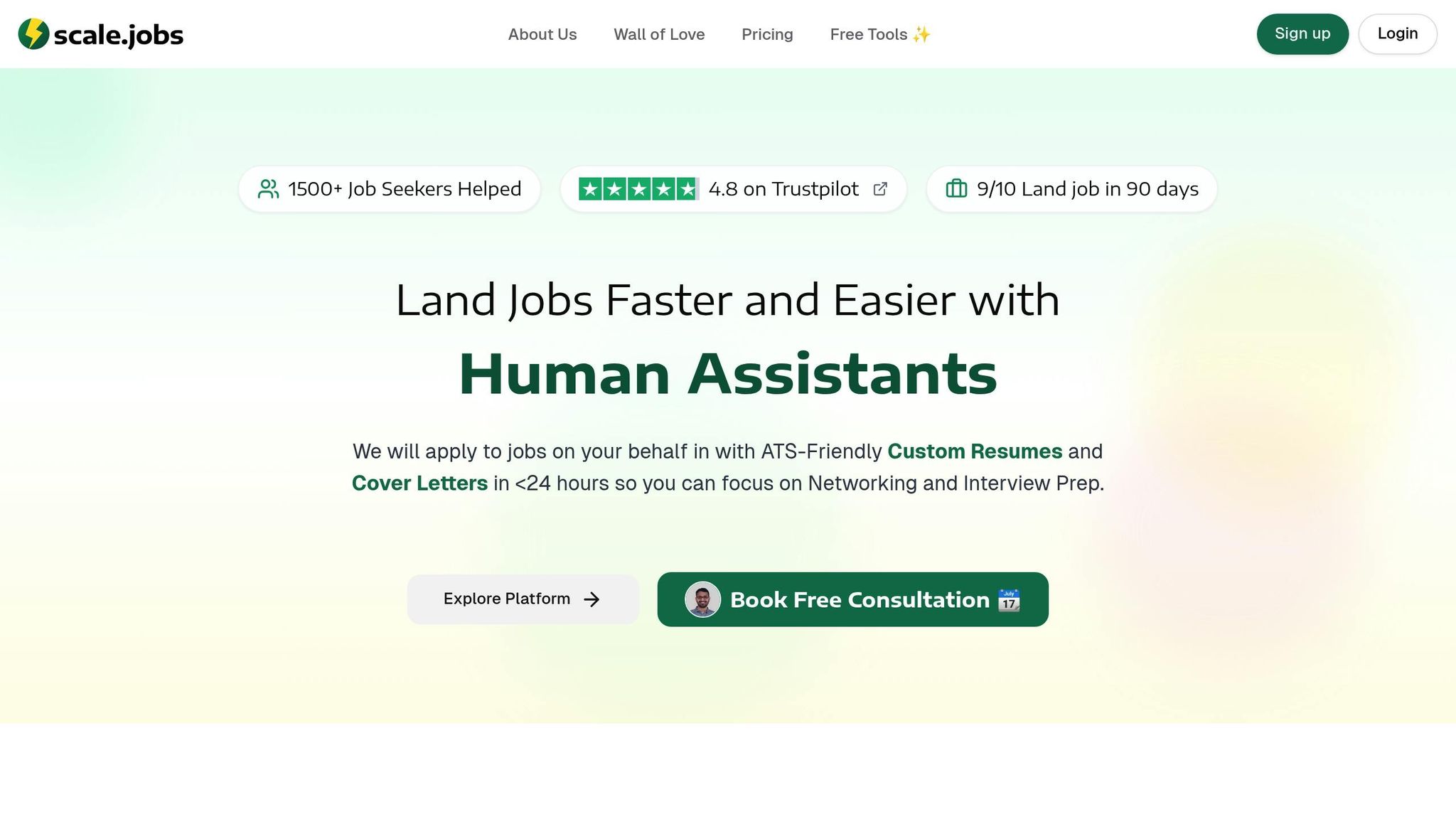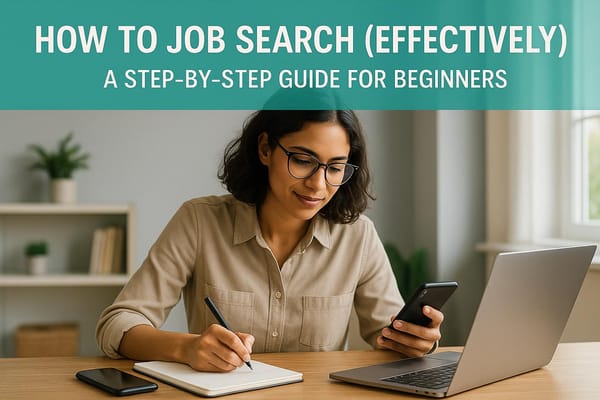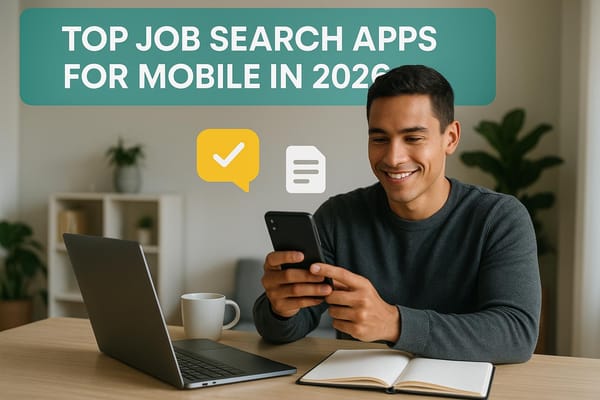Demographic Profiling for Job Applications
Learn how demographic profiling can enhance your job applications, boost interview chances, and align with industry expectations.

Demographic profiling can transform your job applications by aligning them with employer expectations, increasing your chances of landing interviews. Here's what you need to know:
- Tailored Applications Work: Applications tailored using demographic insights are 68% more likely to get callbacks (2024 LinkedIn survey). Optimized resumes can boost interview rates by 40% (2025 Yale study).
- Key Success Factors: Focus on ATS optimization (use role-specific keywords), cultural alignment (reflect company values), and role-specific language (use industry terms).
- Industry Trends: Tech jobs prioritize education and visa status, healthcare values licensure and language skills, and finance favors MBAs and local candidates.
- International Candidates: Highlight visa status and cross-border experience to improve callbacks by up to 300%.
- Legal Compliance: Avoid referencing protected categories like race or gender to ensure compliance with Title VII regulations.
Quick Tip: Use tools like ATS checkers and salary predictors to optimize your applications and align with industry needs. Tailoring your resume and cover letter is essential to stand out in a competitive job market.
Key Demographics in Hiring Decisions
Industry-Specific Hiring Patterns
Different industries prioritize specific candidate traits and qualifications. For example, tech companies often focus on educational backgrounds, especially degrees from top-50 universities. In healthcare, state licensure is non-negotiable, and being bilingual - particularly in Spanish - can increase callback rates by 31% for patient-facing roles. On Wall Street, MBA credentials are highly sought after, with 76% of managerial positions requiring or preferring this qualification. Additionally, 82% of financial firms in New York City prefer local candidates for hybrid roles. Understanding these trends can help you tailor your applications to align with industry expectations.
| Industry | Primary Demographics | Secondary Factors | Impact on Hiring |
|---|---|---|---|
| Technology | Educational background, Visa status | Cultural fit | 43% of listings mention H1B sponsorship |
| Healthcare | State licensure, Language skills | – | 100% require state credentials |
| Finance | MBA credentials, Location | – | 76% prefer MBA for management roles |
Meeting Company Requirements
Employers assess candidates based on various factors, while adhering to legal hiring practices. For instance, 61% of recruiters view employment gaps longer than six months as a red flag. To address this, frame such gaps as opportunities for professional growth or skill-building.
A UMass Employment Equity Report highlights a shift in hiring preferences, with 81% of employers now focusing more on proven skills than traditional credentials.
Geographic location also plays a growing role in hiring decisions. Remote job postings have dropped by 38% year-over-year, while preferences for local candidates have risen by 72%, especially in hybrid work environments.
For international candidates, visa status is another key consideration:
| Visa Status | Application Strategy | Success Metric |
|---|---|---|
| OPT/CPT | Clearly disclose work authorization dates | 31% higher callback rate |
| H1B Transfer | Highlight existing visa status | 28% improved response |
| Green Card | Emphasize long-term commitment | 42% better engagement |
While 89% of large companies require a four-year degree for technical roles, startups are increasingly open to hiring candidates with bootcamp credentials. This reflects a growing trend toward flexible and localized hiring practices.
To refine your application, tools like the Scale.jobs Resume ATS Checker can help identify hidden demographic preferences, while the Scale.jobs Salary Predictor provides insights into regional salary expectations. By understanding these factors, you can better tailor your resume and cover letter to align with employer needs.
Writing Targeted Resumes and Cover Letters
Matching Resumes to Job Requirements
To stand out, align your resume with the specific demands of the job you're applying for. Data shows that resumes tailored to job descriptions receive 40% more interview requests compared to generic ones.
For technical roles, focus on highlighting programming languages and certifications that are currently in demand. A 2024 LinkedIn analysis found that 78% of Silicon Valley tech jobs favor candidates skilled in Python, JavaScript, and cloud certifications like AWS or Azure. Similarly, healthcare positions often require expertise in electronic health record (EHR) systems. Proficiency with platforms like Epic or Cerner - mentioned in 65% of hospital administration job postings, according to SHRM's 2024 Survey - can make a big difference.
| Career Level | Resume Focus | Example Achievement Format |
|---|---|---|
| Entry-Level | Education & Projects | "Led 3-person team in developing machine learning algorithm, increasing prediction accuracy by 28%" |
| Mid-Career | Quantified Results | "Reduced patient wait times by 35% through EHR system optimization" |
| Senior Level | Leadership Impact | "Directed cross-functional team of 12, delivering $4M in annual revenue through new market expansion" |
Use measurable achievements to show your value. For example, sales professionals can highlight regional success: "Boosted Midwest territory revenue by 15% quarter-over-quarter using advanced CRM analytics." For education roles, metrics like student outcomes are key: "Increased retention rates by 22% by implementing culturally responsive teaching methods."
Writing Role-Specific Cover Letters
Cover letters should be as targeted as resumes. Research indicates that customized cover letters result in 53% higher callback rates, with even better results in finance (+68%) and technology (+61%) sectors. A simple way to structure your cover letter is the PES formula:
- Problem: Address a specific challenge the company faces.
- Evidence: Share relevant experience or skills.
- Solution: Explain how you can contribute to solving the problem.
For industries like finance and healthcare, using regulatory terms can strengthen your application. Mentioning experience with SEC reporting or compliance with ICH E6 standards, for example, adds credibility.
A 2024 FlexJobs report noted that addressing local market challenges in your cover letter can increase offer rates by 33%. For remote roles, emphasize your ability to collaborate across time zones and manage flexible schedules. For on-site positions, showcasing local involvement - like participation in community tech events - can set you apart.
To give your cover letter an extra edge, consider using tools like Scale.jobs, which help incorporate industry-specific language tailored to the role.
Application Tools and Services
Scale.jobs Application Support

Scale.jobs combines demographic insights with both human expertise and automated tools to simplify the job application process. Their virtual assistants create ATS-friendly, industry-specific resumes and cover letters. According to their data, 93% of users secure jobs within three months.
The process begins with an onboarding call to address key areas:
- Industry-specific needs
- Career goals and trajectory
- Target demographic markets
- Visa-related requirements
For job seekers, this support can be a game-changer. Software Engineer Aubrey Smith shares:
Applying each job is such a painful process sometimes it takes more than 15 minutes for one application... Team did a great help in applying jobs and always available to talk. They followed my priority in applying jobs as well.
In addition to personalized help, Scale.jobs offers free digital tools to make the application process even smoother.
Scale.jobs Free Tools Overview
| Tool | Primary Function | Key Benefit |
|---|---|---|
| Resume ATS Checker | Analyzes resume compatibility | Increases visibility across industry ATS systems |
| Cover Letter Generator | Creates role-specific letters | Aligns content with industry standards |
| Salary Predictor | Estimates compensation ranges | Helps set realistic salary expectations |
| Interview Questions Predictor | Prepares industry-specific questions | Boosts interview preparation |
| Portfolio Website Generator | Builds a professional online presence | Improves recruiter visibility |
These tools have proven effective, as highlighted by user success stories. Consultant Apoorv Singh recalls:
Facing a layoff during a recession with only 60 days left on my H1B visa, I was in a critical situation... 4 weeks down the line, I secured three job offers, with a 75% salary increase compared to my previous position... Highly recommend Scale.jobs and it exceeded all my expectations.
Product Strategist Teja Aditya Surabhi also shares:
I moved from India to Canada and recruiting worked very differently from where I was coming... It took me a while to get a hang of how job search works here and applying to jobs was my biggest pain point... I found scale.jobs that helped me focus on the right things.
The platform's results speak for themselves: 47% of successful job placements came directly from Scale.jobs applications, while 46% were achieved through personal networking and individual efforts.
Best Practices and Legal Guidelines
Preventing Bias in Applications
Understanding demographic data rules is crucial. The Equal Employment Opportunity Commission (EEOC) mandates that employers with 100 or more employees track workforce demographics. However, this data must be kept separate from hiring decisions.
Here are some key practices to follow during job applications:
| Application Element | Best Practice | Legal Requirement |
|---|---|---|
| Personal Information | Provide only your legal name | Required by Form I-9 |
| Protected Characteristics | Voluntary disclosure with a "decline" option | Mandatory to include this option |
| Disability Status | Disclose after receiving a job offer | Fulfills Form CC-305 requirements |
| Demographic Data | Submit separately | Must remain isolated from hiring teams |
A 2024 HR study by Microsoft found that removing ZIP codes from applications reduced screening bias by 37%. Implementing these practices helps protect against bias while supporting secure data management.
Data Protection Requirements
The EEOC also requires employers to retain demographic data for one year for unsuccessful applicants and three years for those who are hired. This data must be stored securely, using encryption and kept separate from application materials.
Proper handling of demographic data is just as important as crafting a strong resume. Federal contractors face additional requirements. For example, companies with 50 or more employees and contracts worth $50,000 or more must collect specific demographic data, including information on veteran and disability status, as outlined by OFCCP regulations.
Key compliance steps include obtaining explicit consent, offering opt-out options, and ensuring data deletion requests are processed within 30 days. Many firms have adjusted their practices to meet these standards. Goldman Sachs, for instance, achieves an 89% compliance rate for demographic reporting by using encrypted post-offer surveys for executive roles, outperforming the 67% industry average.
In 2023, 63% of discrimination cases stemmed from improper use of demographic data during hiring. Settlements for such violations in the tech sector averaged $500,000 per case.
How to Build a MBA Resume that Stands Out From Your Demographic
Conclusion: Making the Most of Demographic Insights
Using demographics effectively in your job search means finding the right balance between personalization and staying compliant with regulations. A LinkedIn study from 2024 found that job applications tailored to match employer demographics were 30% more likely to lead to interviews. This highlights the importance of a strategic approach when targeting applications.
Experts like Jane Doe, a former Meta recruiter, recommend focusing on demonstrating cultural compatibility - such as showcasing experience in global collaboration - rather than highlighting personal traits like nationality. This aligns with earlier findings that emphasize the benefits of tailoring applications. For example, Spotify Global's anonymous resume screening in Q3 2022 resulted in an 18% rise in minority hires for technical roles, while maintaining a 92% satisfaction rate among hiring managers.
To make the most of demographic insights in your job search:
- Look into company diversity reports to find alignment opportunities.
- Highlight transferable skills instead of personal details.
- Use language that aligns with industry standards and is friendly to applicant tracking systems (ATS).
Tools like Scale.jobs can help streamline this process with features such as:
- Resume ATS Checker: Ensures your resume includes role-specific keywords.
- Interview Questions Predictor: Helps you prepare for industry-relevant questions.
- Cover Letter Generator: Aligns your cover letter with the company’s culture.
A U.S. Office of Personnel Management study (2016–2017) found that handling demographic data thoughtfully increased voluntary disclosures from 59.7% to 70.9% across 2.6 million applications. This demonstrates how leveraging demographic insights can not only improve your chances as an applicant but also contribute to broader diversity goals within organizations.
FAQs
How can demographic profiling help me tailor my job application and improve my chances of landing an interview?
Demographic profiling can significantly enhance your job application process by helping you better align your resume and cover letter with the specific expectations of industries, companies, and roles. By understanding the typical qualifications, skills, and experiences valued in a particular demographic or job market, you can customize your application materials to stand out to recruiters and hiring managers.
For example, if you're applying for a tech role in the United States, highlighting in-demand technical skills, relevant certifications, and projects that demonstrate innovation can make your application more compelling. Similarly, for roles requiring strong communication or leadership abilities, tailoring your achievements to showcase these strengths can increase your chances of securing an interview. Personalized applications show employers that you understand their needs and are a strong fit for their team.
What legal considerations should I keep in mind when tailoring job applications based on demographic data?
When using demographic data to customize your job applications, it’s crucial to ensure that your approach aligns with anti-discrimination laws in the United States. The Equal Employment Opportunity Commission (EEOC) prohibits discrimination based on race, color, religion, sex, national origin, age, disability, or genetic information during the hiring process.
Focus on using demographic insights to better understand industry trends, company culture, or role expectations rather than making assumptions or misrepresenting yourself. Always present accurate information about your skills and experiences while ensuring your application materials remain professional and relevant to the job.
If you’re unsure about the legalities, consider consulting resources or experts on employment law to avoid any potential issues.
How can international jobseekers effectively showcase their visa status to improve their chances of getting callbacks?
International jobseekers can improve their chances of receiving callbacks by clearly and professionally addressing their visa status in their job applications. Mention your current visa type and work authorization details in your resume or cover letter, especially if you are fully authorized to work in the U.S. without sponsorship. For example, you can include a brief note like: “Authorized to work in the U.S. under [visa type], no sponsorship required.”
If you require sponsorship, be transparent about it while focusing on your skills and value. Tailor your application to highlight how your expertise aligns with the employer's needs, making a strong case for why they should consider sponsoring you. Being upfront about your visa situation helps employers make informed decisions and demonstrates your professionalism.




